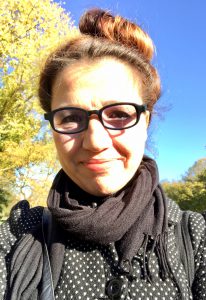
Researchers in the CLAHRC’s psychosis theme have recently completed a project to help people who are about to be discharged from secondary mental health care to look after their physical health and to engage better with primary care services.
For the project, 12 participants recruited from community-based mental health services in Southwark and Sutton, were put in touch with a peer-support worker – people who have themselves experienced mental health difficulties. Over six sessions the peer-support worker and service users worked together to identify participants’ physical health needs and goals.
As part of this, participants made a physical map of their wellbeing network, showing what they do, who they see and where they go in a typical week. The idea was to have conversations about how participants could better address their health, including building on healthy activities that they already do, such as going to a local park or walking to the shops.
In this blog, Nick Sarson, communications manager at CLAHRC South London, interviews one of the peer-support workers and trainers, Jolanta Bartnik, about how she became involved in peer-support work and her experiences of this project.

Jolanta, can you tell us how you became involved in peer-support work?
I was first diagnosed with mental health issues about 16 years ago in Poland. I was experiencing anxiety, panic attacks and depression. After using a range of self-management techniques and supportive therapies, I decided I wanted to help people struggling with the same issues. I took some courses in counselling in Poland, and then decided to move to England, thinking that all I needed was a change. I left my career in the financial sector, my family and friends, and travelled to England hoping for a better life.
But after arriving in England, I started to struggle again with my emotional and mental wellbeing. An unsuccessful relationship, a hard, physical job, homesickness and lack of friends led again to depression, anxiety and isolation. I also felt excluded from society here, because I didn’t speak English. I couldn’t see the point of life and experienced suicidal thoughts.
However, around this time, I was looking for ways to gain some English qualifications to support other people, share my knowledge and my experience. Using different support from improving access to psychological therapies (IAPT) services, I came across a course on Intentional Peer Support. After completing the course, I started to feel more confident and positive and that I would like to use my skills in research. In 2017 my manager at the Sutton Mental Health Foundation, Carol Jacques, organised a meeting with St George’s and King’s College London to introduce the new wellbeing network mapping project, which I got a place on as a peer-support worker and trainer.
What was your role in the project?
My role was to help my peer to make the map of their social connections and help them to realise how their environment influences their physical wellbeing. After making the map, we then set up their personal goals to increase their physical activity. My peer was a similar age to me, female and an immigrant from Africa – we found that we had many things in common, which helped us connect and to enjoy working through the project’s tasks together.
How did you go about making the map?
One of the biggest triggers for immigrants’ mental health is social isolation and lack of belonging. My peer also struggled with loneliness because of unemployment and low self-esteem. She wanted to change things in her life, but did not know how to, and she was getting more and more unwell. She was stuck in a vicious circle: lack of sleep because of overthinking her situation, lack of physical movement due to loneliness, and overeating as a substitute for happiness. This was having a huge impact on her physical health.
What did the map show? What goals did you develop?
The map highlighted how loneliness, low self-confidence and social anxiety stopped my peer to live a healthier lifestyle. Luckily, we found many small opportunities that could be used for activities to improve physical health. For example, we had one of our sessions in a local park that is close to where she lives, and she agreed she could use the park more often. Instead of driving to the nearest shops she also decided to walk. Making the map helped her to be more aware about patterns like overeating when she is depressed and struggling to go to the gym because of social anxiety.
How successfully did the participant work towards her physical health goals?
Understanding the mental and emotional challenges that immigrants face in a new country helped us to work on the project together. Lack of language, lack of confidence and low self-esteem often stop people from doing group physical activities. We worked on something that could be done every day without other people. Doing more walking seemed to be one of the best ways of getting out of the house as well as bringing opportunities to make new connections. Besides this, my peer has also decided to train to be a peer-support worker.
What do you think is the value of this kind of peer-support intervention?
On a personal level, the mapping project helped me to feel more confident about my skills, such as active listening, reflecting and motivating. I am happy that I had the opportunity to give someone hope, and to remind them that we are all human and suffer similar emotions.
Whether you come from eastern Europe or Africa, many immigrants to a new country experience the same homesickness, and struggle with identity and belonging. Some people find it easier to adapt. But for those who are less confident it is not always easy. The mapping project highlights the importance of our relationships and how our everyday environment influences our health. The project also shows that physical health is often linked directly with mental health – people who are suffering emotionally tend to neglect their physical health.
I really believe a more holistic approach to health and wellbeing is needed. That is why, working together with the Sutton Mental Health Foundation, I have set up my own project: Polish Your Wellbeing. One of the project’s goals is to improve the lives of Poles living in Sutton by making healthy local connections. Although the project is aimed at the Polish community, I hope it spreads to other communities as well. I have also joined a local BME forum where I underline the importance of mental health support for immigrant communities.

Leave a Reply